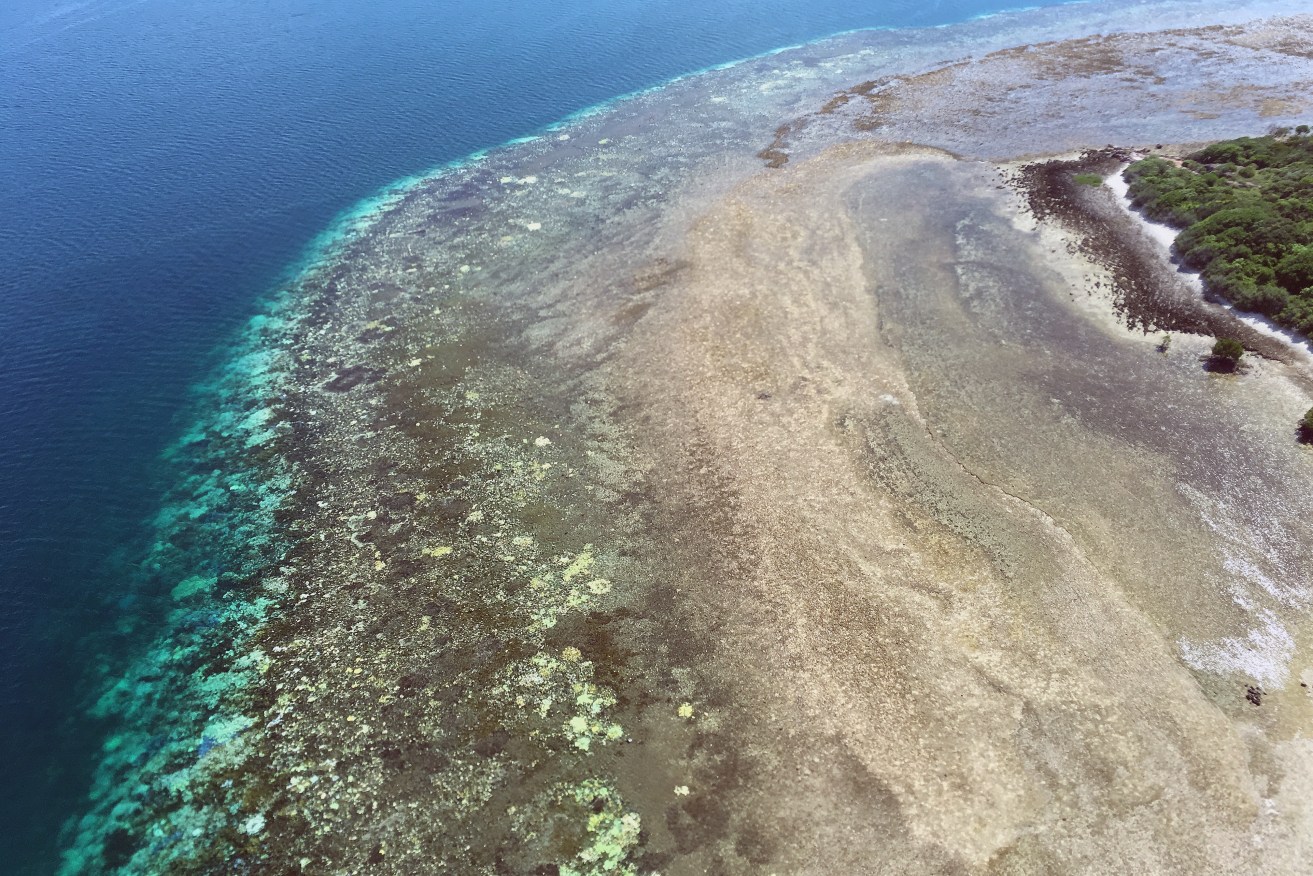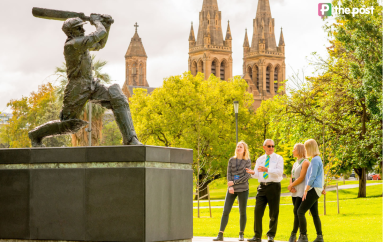Coral death toll high on reef: scientists
Mass bleaching has killed an estimated 35 per cent of corals on sections of the Great Barrier Reef between Papua New Guinea and Townsville, scientists say.

An aerial view of bleached coral reef located between Cairns and Papua New Guinea. Photo: AAP/ARC Centre of Excellence for Coral Reef Studies
However the picture isn’t as bleak further south where reefs are said to be in much better shape following this year’s mass bleaching event, the third in 18 years.
An initial estimate of the coral bleaching death toll released by researchers from the ARC Centre of Excellence for Coral Reef Studies on Monday, following months of intensive aerial and underwater surveys, paints a varied picture of the reef’s condition.
“We found on average that 35 per cent of the corals are now dead or dying on 84 reefs that we surveyed along the northern and central sections of the Great Barrier Reef,” Professor Terry Hughes said.
“Some reefs are in much better shape, especially from Cairns southwards, where the average mortality is estimated at only five per cent.”
Coral bleaching occurs during abnormal environmental conditions, like heightened sea temperatures.
Hughes said all three coral bleaching events had occurred while global temperatures had risen by just 1C above the pre-industrial period.
“We’re rapidly running out of time to reduce greenhouse emissions,” he said.
The researchers said reefs further south had escaped damage because water temperatures there were closer to normal summer conditions.
Although fewer corals had died to the south, the stress from bleaching was likely to temporarily slow down their reproduction and growth rates, they said.
AAP




